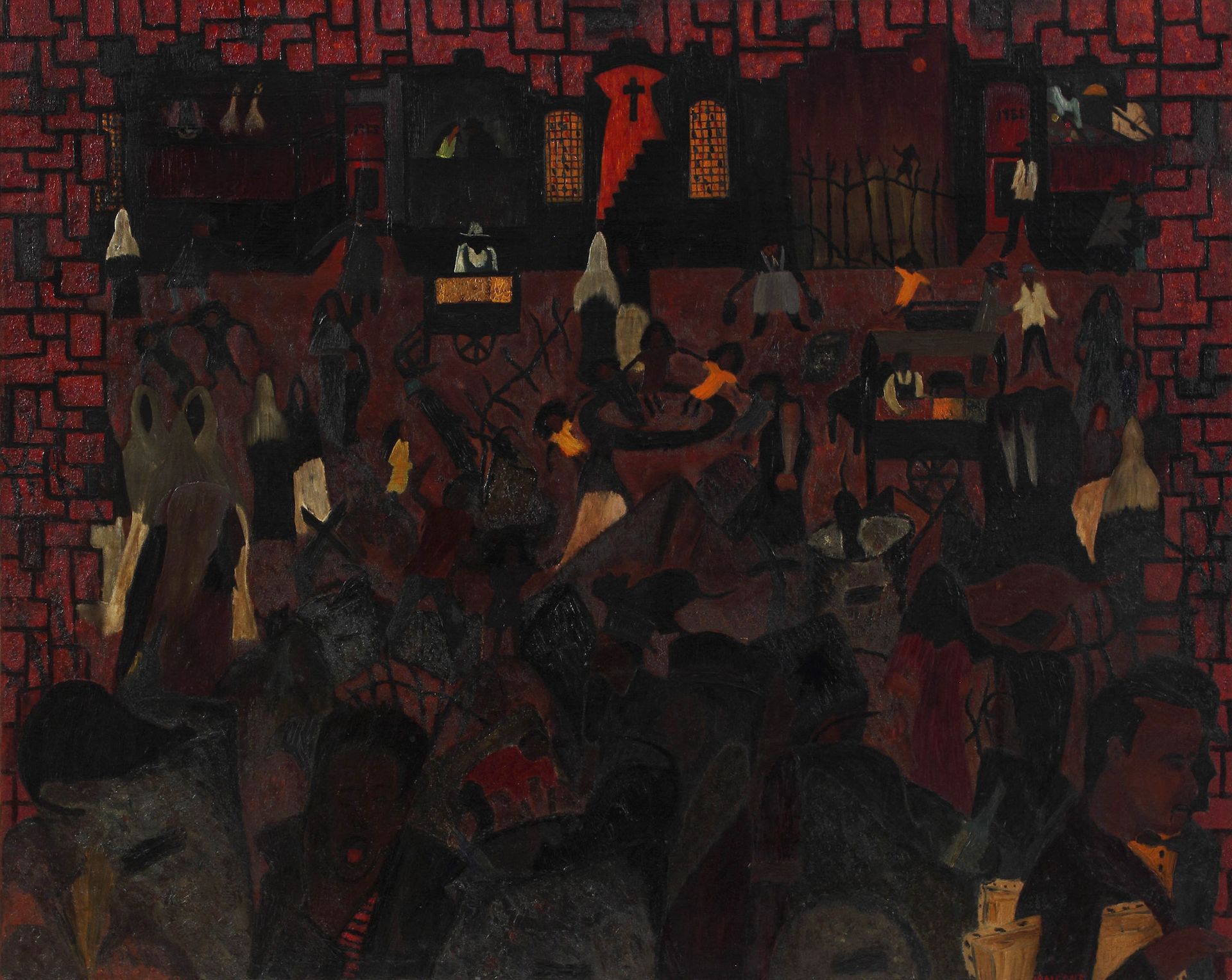Jennie C. Jones: Dynamics
Until 2 May at the Solomon R. Guggenheim Museum, 1071 Fifth Avenue, Manhattan
The Minimalist artist Jennie C. Jones evokes musical notation through abstract geometric arrangements in her paintings and sculptures, some of which incorporate acoustic panels on canvas and board. Jones describes her work as the “physical residue of music”, interweaving the tangible nature of painting with the ephemerality of sound. Through her use of non-traditional materials, Jones creates what she calls “active surfaces” in her works, which absorb and dampen sound and interact with the architecture and bodies around them, creating a sensory experience that expands on the optical and reductive nature of Minimalist art. As viewers ascend the Guggenheim’s spiral ramp, an ambient meditative noise emerges. “There is an ache inherent in Minimalism” in art and music, Jones explains, “the distillation of so much existential matter into a single line, a solitary gesture”.

Lygia Clark, Unidade 7 (Unit 7) (1959). Courtesy Shin Gallery.
Brazil and the Avant-Garde: Raizes
Until 26 February at Shin Gallery, 322 Grand Street, Manhattan
Coinciding with the centennial of the Brazilian arts festival “Semana de Arte” (Modern Art Week)—a watershed event held in São Paulo that is credited with having propelled Brazilian Modernism—this exhibition presents a series of Neo-Concrete works by artists like Lygia Pape and Anna Maria Maiolino that exemplify the ethos of the movement, which aimed to reimagine European aesthetics, from hard-edge geometric combinations to conceptual works exploring themes around cultural identity. The contemporary artist Otavio Schipper extends the tradition, using ready-made objects to evoke the lasting effects of colonialism and political encroachment on everyday life. The show also has a focus on “naïve works”, including pieces by the little-known artist Elisa Martins da Silveira, a contemporary of the major artist Djanira da Motta e Silva, while a separate gallery features a selection of drawings of zoomorphic and shamanic figures made by members of Indigenous tribes, a point of reference for many Brazilian Modernists.

Vincent Smith, Saturday Night in Harlem, 1955 Courtesy Alexandre Gallery
Vincent Smith: For My People
Until 26 February at Alexandre Gallery, 291 Grant Street, Manhattan
The city seems on the verge of swallowing up its residents in most of the 18 paintings by Vincent Smith, all made between 1954-72, on view at Alexandre Gallery’s Lower East Side space. In tenebrous compositions that draw on Expressionism and Social Realism, the artist (who died in 2003) rendered scenes of Black life in Harlem and Brooklyn. Figures are depicted framed in windows, darkened clubs or enveloped in shadowy streetscapes, the hardness of the scenes Smith observed reinforced by his addition of sand to his paint in many compositions. And yet these gritty, somber paintings are also pictures of resilience and even, occasionally, celebration, as in the visually muted yet palpably bustling scene in Saturday Night in Harlem (1955). Smith’s absence, until recently, from the canon of post-war American art was a glaring oversight. Not only is his work uniquely inventive and engrossing, it provides a key link between the social realism of the inter-war period (think of Paul Cadmus’s scenes of cavorting sailors on shore leave), contemporaries like his friend Jacob Lawrence and artists like Martin Wong who helped re-invigorate figurative painting in the 1980s.


![Jennie C. Jones, Neutral [clef] Structure 1st & 2nd (2021). © Jennie C. Jones. Courtesy Alexander Gray Associates, New York, and Patron Gallery, Chicago.](https://cdn.sanity.io/images/cxgd3urn/production/211c76fc3efa796e83cb732fa140821c387b4cbe-3000x1952.jpg?rect=0,0,2999,1952&w=1200&h=781&fit=crop&auto=format)